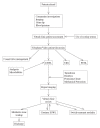How to maximize the efficacy of shockwave lithotripsy
- PMID: 33135997
- PMCID: PMC7731956
- DOI: 10.5152/tud.2020.20441
How to maximize the efficacy of shockwave lithotripsy
Abstract
Since its introduction in the early 1980s, extracorporeal shockwave lithotripsy (ESWL) has proven to be a minimally invasive and efficient procedure for the management of renal calculi. It is currently one of the most recommended treatments for small- and medium-sized stones (<20 mm) in most guidelines internationally. The recent coronavirus disease 2019 (COVID-19) outbreak could lead to a further increase in ESWL use as it avoids a general anesthetic and its potential complications in patients with COVID-19 infection. Most publications exhibit ESWL stone-free rates (SFRs) of 70%-80%; however, this is often not the case in many centers, with multiple factors affecting the efficacy of the intervention. Various stone and patient factors have been shown to influence the ESWL success. Stone position, density and size, skin-to-stone distance, and body-mass index contribute to SFRs. Modifications in the lithotripter design and revisions in the technique have also improved the SFRs over the years, with slower shock rates, power-ramping protocols, combined real-time ultrasound, and fluoroscopy imaging technology, all enhancing the efficacy. The adjuvant use of pharmacological agents, such as alpha-blockers, potassium citrate, and the emerging microbubble technology, has also been investigated and shown promising results. Arguably, the most significant determinant of the success of ESWL in a particular unit is how the lithotripsy service is set up and monitored. Careful patient selection, dedicated personnel, and post-treatment imaging review are essential for the optimization of ESWL. Through an analysis of the published studies, this review aimed to explore the measures that contribute to an effectual lithotripsy service in depth.
Conflict of interest statement
Figures
References
-
- NICE guidelines: Renal and ureteric stones: assessment and management. Available from: https://www.nice.org.uk/guidance/NG118. - PubMed
-
- Matlaga B, Lingeman JE. Surgical management of urinary lithiasis. In: Wein AJ, Kavoussi LR, Novick AC, Partin AW, Peters CA, editors. Campbell-Walsh Urology. Philadelphia: Saunders; 2010.
Publication types
LinkOut - more resources
Full Text Sources

